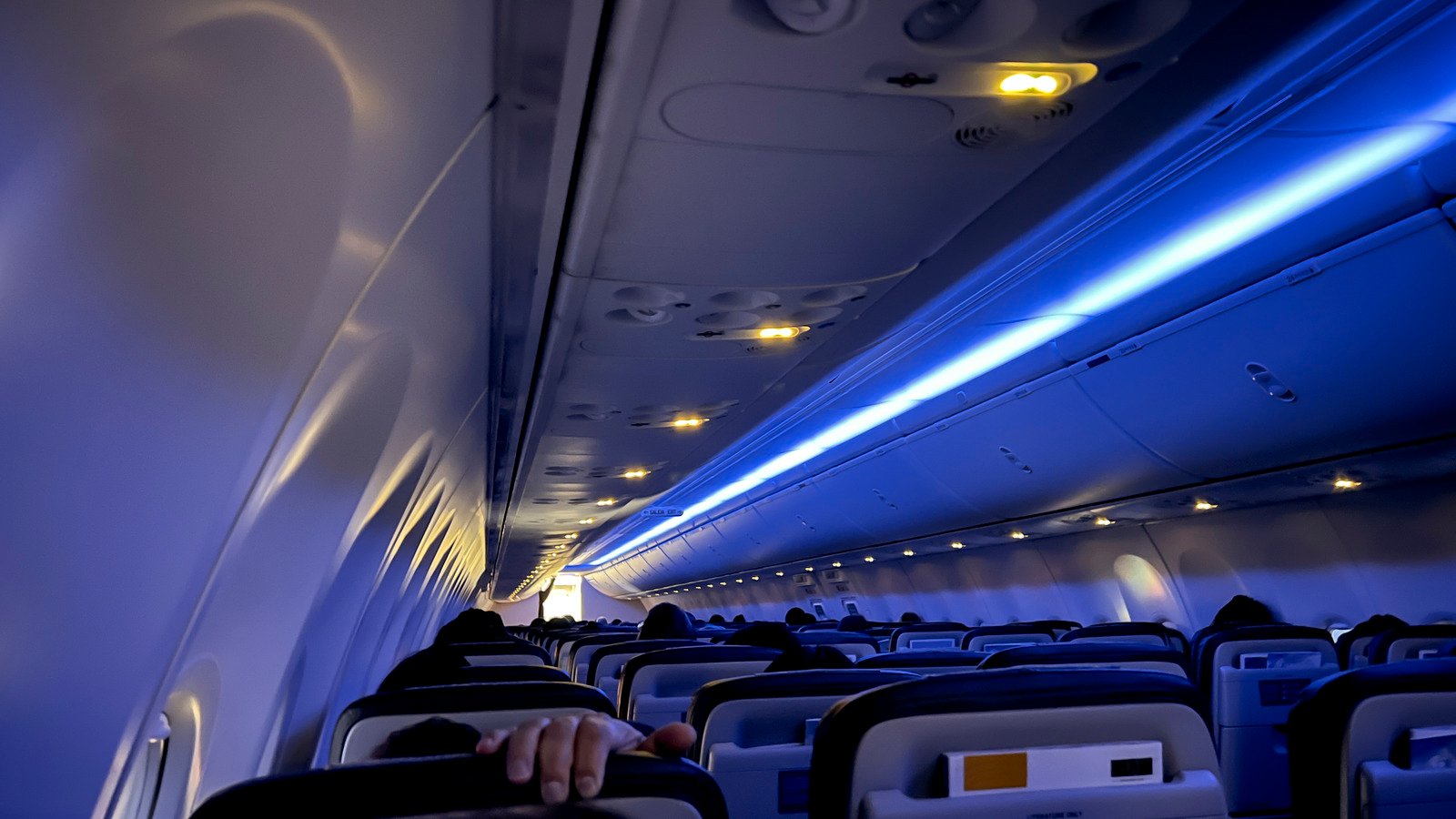But how exactly does this work, and why is it such an integral part of aviation procedures?
According to Dr. Vandana Singh, head of Global Corporate Key Account Management for Saudia Cargo, “the main reason for dimming cabin lights during takeoff and landing is to help passengers’ eyes adjust to lower light conditions,” IndianExpress.com reports.
According to Dr. Singh, eye adaptation to darkness enhances reaction times by making passengers’ eyes more sensitive to low light levels. It is easier for passengers to see emergency exit signs and other important visual cues in low light when the cabin lights are lowered because they can gradually adjust to the darker surroundings.
Dimmed lights improve vision by lessening the contrast between the interior and outside light, which makes an evacuation safer and faster if needed.
Are there any specific international aviation regulations or standards that mandate dimming cabin lights?
The dimming of cabin lights is a commonly known safety practice among airlines and is not specifically required by international aviation laws. Airlines usually adopt these procedures based on safety suggestions rather than stringent legislative requirements, even though they are informed by guidelines from national aviation authorities such as the Federal Aviation Administration (FAA) or the European Aviation Safety Agency (EASA). Therefore, even if it might not be required everywhere, turning down cabin lights is in line with best practices for improving passenger safety, according to Dr. Singh.
Other safety measures typically employed during takeoff and landing that passengers might not be aware of
According to Dr. Singh, “a number of safety procedures are used during takeoff and landing that passengers may not be aware of, all aimed at ensuring their safety and preparedness.” Passengers must raise their window blinds as one important precaution. This procedure enables both passengers and crew members to evaluate the outside environment and spot any possible dangers. Furthermore, it is essential to secure personal belongings; loose things should be appropriately stowed to avoid turning into hazardous projectiles during turbulence or abrupt pauses.
Making sure the seatbacks are upright is another crucial safety precaution, she continues. This lowers the chance of injury during unforeseen circumstances in addition to giving passengers the best brace positions. By giving pre-flight safety briefings, flight attendants play a crucial role in ensuring passenger safety. During these briefings, travelers are taught how to use oxygen masks and life jackets if needed, as well as how to use seatbelts and emergency exits.
Additionally, the cabin has emergency lighting systems placed thoughtfully throughout. According to Dr. Singh, these devices light up evacuation routes in low visibility conditions, ensuring that passengers can safely exit the aircraft in the event of an emergency. “When taken as a whole, these steps improve overall safety during crucial flight phases and guarantee that passengers are adequately equipped to handle any potential emergencies.”
Together, these precautions improve safety throughout crucial flight stages and guarantee that passengers are ready for any eventual emergency.





